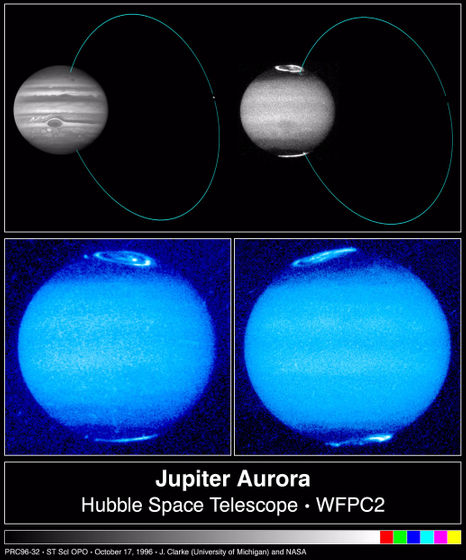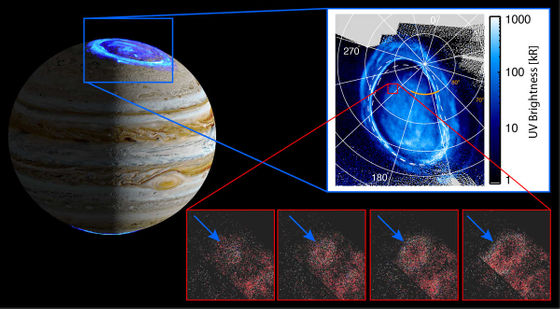A rapidly expanding ring-shaped aurora is observed on Jupiter

NASA's Jupiter spacecraft
Detection and characterization of Circular Expanding UV-Emissions Observed in Jupiter's Polar Auroral Regions --Hue --2021 --Journal of Geophysical Research: Space Physics --Wiley Online Library
https://agupubs.onlinelibrary.wiley.com/doi/10.1029/2020JA028971
NASA's Juno Reveals Dark Origins of One of Jupiter's Grand Light Shows | NASA
https://www.nasa.gov/feature/jpl/nasa-s-juno-reveals-dark-origins-of-one-of-jupiter-s-grand-light-shows
SwRI scientists discover a new auroral feature on Jupiter | Southwest Research Institute
https://www.swri.org/press-release/swri-scientists-discover-new-auroral-feature-jupiter
Jupiter has a particularly strong magnetic field compared to the Earth, and ions such as sulfur and oxygen blown up by the satellite Io fill the magnetosphere of Jupiter, and these ions excite the gas with high-energy charged particles. It is known to be able to observe aurora that is clearer than the earth. What is said to be unique among Jupiter's aurora is the 'Auroral,' which the Hubble Space Telescope observed at both poles of Jupiter in 1994, in which a ring of ultraviolet aurora brightens and spreads violently in a short period of time. dawn storms '.

'Aurora dawn storms' attracted attention as a peculiar aurora phenomenon on Jupiter, but the Hubble Space Telescope could only observe from the 'side of the ring' due to the angle problem. However, the whole picture was captured for the first time by the spacecraft Juneau orbiting Jupiter.

The following is an overview of 'Auroral dawn storms' captured by the UV-visible spectrophotometer installed in Juneau. The ring, which has entered the position where the sun hits due to its rotation, shines even more, emitting hundreds to thousands of gigawatts of ultraviolet light, and emits at least 10 times more energy than the normal aurora on Jupiter over Jupiter. thing.
Evolution of a Dawn Storm in Jupiter's Polar Auroras-YouTube
According to experts, 'Auroral dawn storms' are very close to the aurora called ' substorms' observed on Earth. A substorm is an astronomical phenomenon that occurs when the energy stored in the Earth's magnetosphere is suddenly released, which is carried by the flow of plasma called the solar wind. The similarities between 'Auroral dawn storms' are 'extremely surprising.'
'The power of Jupiter is amazing, and the energy of Aurora dawn storms is one of the examples of how powerful Jupiter is,' said Scott Bolton, senior researcher on the Juneau mission at the Southwest Institute. That's it. '
Related Posts:







